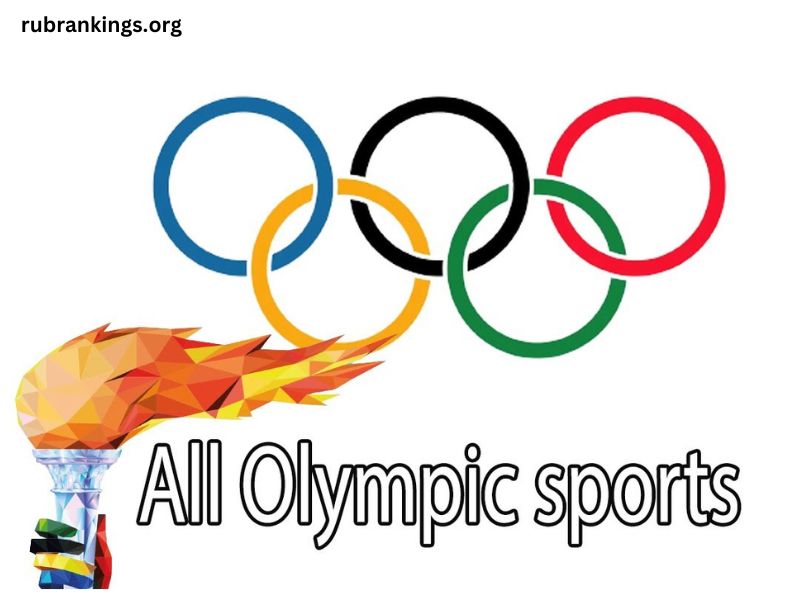The Summer Olympics is one of the largest and most prestigious international sporting events in the world. Held every four years, the Olympics bring together thousands of athletes from various countries to compete in a wide range of sports, showcasing their abilities on a global stage. The modern Olympic Games have grown to include a diverse lineup of sports, each with its own unique traditions, rules, and appeal. This article will delve into the different sports featured in the Summer Olympics, highlighting their history, significance, and the thrill they bring to fans and athletes alike.
1. Aquatics
Aquatics encompasses several water-based sports in the Summer Olympics, including swimming, diving, water polo, and synchronized swimming.
- Swimming is one of the most popular Olympic sports, with events held in freestyle, backstroke, breaststroke, and butterfly strokes. Swimmers compete over various distances, from sprints like the 50 meters to long-distance races of 1,500 meters.
- Diving includes both individual and synchronized events where athletes perform acrobatic dives from platforms or springboards. It combines athleticism with artistry as competitors are judged on technique, form, and difficulty.
- Water polo is a fast-paced team sport played in a pool, with teams attempting to score by getting a ball into their opponent’s goal. It requires endurance, skill, and teamwork.
- Synchronized swimming, now known as artistic swimming, involves athletes performing choreographed routines in the water, often accompanied by music. It is a visually stunning sport requiring precision, strength, and grace.
2. Athletics
Athletics is the backbone of the Summer Olympics, covering a variety of track and field events. These are the epitome of human endurance, speed, strength, and agility.
- Track events include sprints (100m, 200m, and 400m), middle-distance races (800m and 1,500m), and long-distance races (5,000m, 10,000m, and the marathon). Relays, like the 4x100m and 4x400m, add an exciting team component.
- Field events feature jumping and throwing disciplines such as the long jump, triple jump, high jump, pole vault, shot put, discus, javelin, and hammer throw.
- Combined events like the decathlon for men and heptathlon for women test athletes across multiple disciplines, awarding points for performance in a series of events.
Athletics is often seen as the purest form of competition, reflecting the Olympic motto of “Citius, Altius, Fortius” — “Faster, Higher, Stronger.”
3. Gymnastics
Gymnastics is another staple of the Summer Olympics, divided into artistic gymnastics, rhythmic gymnastics, and trampoline.
- Artistic gymnastics features both men’s and women’s events, with apparatus like the floor, vault, balance beam, uneven bars (women), and rings, pommel horse, and parallel bars (men). It is a combination of strength, flexibility, and precision.
- Rhythmic gymnastics is only for women and involves performing routines with apparatus such as ribbons, hoops, balls, and clubs, blending ballet, dance, and gymnastics elements.
- Trampoline gymnastics showcases athletes performing high-flying acrobatic routines on a trampoline, with points awarded for height, complexity, and execution.
4. Cycling
Cycling in the Summer Olympics includes four disciplines: road cycling, track cycling, mountain biking, and BMX.
- Road cycling features long-distance races on public roads, with both individual and team events.
- Track cycling takes place on an indoor velodrome, where athletes race on specialized bikes in events such as sprints, team pursuits, and the keirin.
- Mountain biking is a rugged, off-road discipline, where riders compete over a course with natural obstacles.
- BMX racing and BMX freestyle are more recent additions to the Olympics. BMX racing is a short, fast-paced race over a dirt track, while BMX freestyle involves performing tricks and stunts in a park setting.
5. Combat Sports
Combat sports are a significant part of the Olympic lineup, drawing from ancient traditions and modern martial arts.
- Boxing has been part of the Olympics since 1904, with both men’s and women’s events. Matches are decided by points or knockout, and athletes compete in weight divisions.
- Judo is a Japanese martial art that focuses on throws and grappling. It has been in the Olympics since 1964 and requires both mental and physical discipline.
- Taekwondo is a Korean martial art known for its high, fast kicks. Olympic taekwondo matches are fought in a points-based system.
- Wrestling, one of the original Olympic sports, includes two styles: freestyle and Greco-Roman. Freestyle allows athletes to use their legs and attack their opponents’ legs, while Greco-Roman focuses on upper-body strength.
6. Ball Sports
Many ball sports have found a place in the Summer Olympics, offering team-based competition that requires coordination and strategy.
- Basketball is one of the most-watched Olympic sports, with both men’s and women’s tournaments. In recent years, the fast-paced 3×3 basketball format has also been added.
- Football (soccer) is another global favorite, with men’s and women’s teams competing for Olympic glory. The Olympic football tournament has been a springboard for many young stars.
- Volleyball and beach volleyball bring excitement to both indoor courts and sandy beaches. Indoor volleyball is played by teams of six, while beach volleyball features pairs battling it out in the sand.
- Handball is a fast-paced team sport that combines elements of basketball and soccer, with players aiming to throw a ball into their opponents’ net.
- Tennis returned to the Olympics in 1988 after a long hiatus and now includes men’s and women’s singles and doubles events, as well as mixed doubles.
7. Racquet Sports
In addition to tennis, other racquet sports are featured in the Summer Olympics.
- Badminton is a highly popular sport in Asia, with fast-paced singles and doubles matches. It requires lightning-quick reflexes and strategic thinking.
- Table tennis is another Olympic racquet sport dominated by Asian countries, particularly China. The game is played at an incredibly fast pace, with singles and doubles competitions.
8. Equestrian
Equestrian sports are unique in the Olympics because they are the only events where men and women compete on equal terms. There are three equestrian disciplines:
- Dressage is often described as “horse ballet,” where riders guide their horses through a series of intricate movements.
- Show jumping involves horses and riders jumping over a series of obstacles within a set time.
- Eventing combines dressage, show jumping, and cross-country, testing both horse and rider’s endurance, precision, and versatility.
9. Shooting and Archery
Both shooting and archery are precision sports that require intense concentration and steady hands.
- Shooting includes events with rifles, pistols, and shotguns, with athletes competing at different distances and targets.
- Archery focuses on accuracy as athletes aim for a distant target with a bow and arrow. The competition is nerve-wracking, with Olympic medals often decided by the narrowest of margins.
10. Weightlifting
Weightlifting is one of the most visually impressive Olympic sports, where athletes lift barbells loaded with weights in two types of lifts: the snatch and the clean and jerk. Competitors are divided into weight classes, and the heaviest total lift wins.
11. Fencing
Fencing is one of the few sports that has been part of every modern Olympics since 1896. Athletes use swords—foil, épée, and sabre—to score points by touching their opponents in a highly strategic and fast-paced duel.
12. Modern Pentathlon
The modern pentathlon is a unique Olympic event that combines five different disciplines: fencing, swimming, horse riding, shooting, and running. It was designed to mimic the skills needed by a 19th-century soldier and has been part of the Olympics since 1912.
Conclusion
The Summer Olympics features a wide array of sports, from traditional athletic events to more modern additions like BMX and 3×3 basketball. Each sport brings its own flavor to the Games, making the Olympics a celebration of human physical and mental achievement. Whether it’s the grace of gymnastics, the raw power of weightlifting, or the precision of archery, the Olympics offers something for every sports fan to enjoy. With each edition of the Games, the lineup continues to evolve, reflecting both the enduring appeal of classic sports and the growing popularity of new ones.



